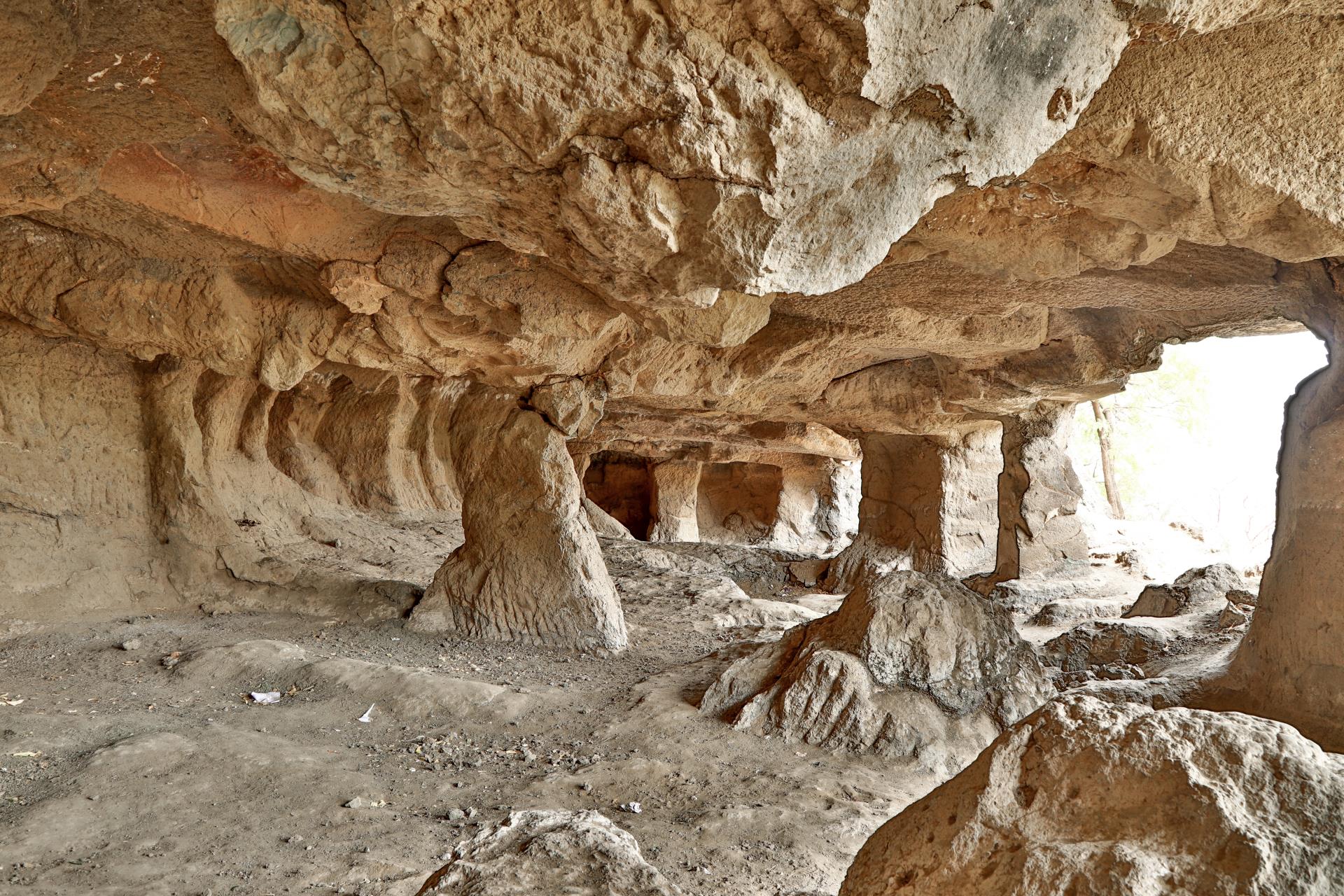
Sorry, we couldn't find anything that matches your search.
Destination

Famous Places to Explore in Hyderabad
A vibrant city with the imposing...

Raipur Tourist Places | Best Place to Visit
The stronghold of several erstwhile...

Ahmedabad
Declared as India's first UNESCO World...
#
Jalna
Jalna is a popular spiritual site that invites people across faiths to visit various shrines and temples here. It is said to be the birthplace of Sant Ramdas Swami, who, according to Hindu mythology, shares his birth timing with Lord Rama. During Nav Navami, a festival is organised here that draws visitors from all over the region. Tourists can also head to Sri Ganesha Temple, about 25 km from the city. It is noted for its celebrations during the Ganesh Chaturthi festival. Another attraction is Anandi Swami Temple, built by Mahadji Shinde, a Maratha warrior. It is believed to be about 250 years old and hosts a grand annual fair on the eve of Ashadi Ekadashi. Around 20 km from the city lies the Matsyodari Devi Temple that is located on a hill that resembles a fish. It makes for an interesting visit, not just for spiritual purposes but also for its attractive architecture.

Lonar Crater
Lonar is among the five largest crater lakes in the world, and is about 2 km wide and 150 m deep. Formed nearly 50,000 years ago, the crater is oval in shape and the only natural impact crater in the world in basalt rock. Geologists believe that it was formed by the impact of a meteorite, and must have been more than a million tonnes to have created such an impact.
The fallen debris from the time of the impact is still present around the rim of the crater. This is called the ejecta blanket and ranges over a kilometre. The lake within the crater is both saline and alkaline but the water becomes more and more alkaline as one goes towards the centre. Low hills covered in forests surround the water body. Tourists can enjoy sighting several wildlife species like the peafowl, chinkara and gazelles in this area. The lake also hosts a number of migratory birds in the winters. The distinctive and vibrant colour of the water is also due to the presence of algae and plankton species in the water . Moreover, the presence of certain minerals like microbreccias and glass spherules has lead scientists to draw parallels between the carter formation and geology of the region and the moon’s! Local legends and mysteries abound as supposedly the compass does not work here. Legends give many reasons but geologists believe it is a result of the unique geologic makeup of the region. Some important religious sites around the lake include the Ram Gaya Temple, the Kamalja Devi Temple, and the partially-submerged Shankar Ganesha Temple. The most significant temple, however, is located in the heart of Lonar town – the Daitya Sudan Temple, dedicated to Lord Vishnu, the slayer of demon Lonasura.

Pitalkhora Caves
Located on Chandora Hill, Pithalkhora Caves are a set of 14 rock-cut Buddhist caves that back to the 2nd century BCE. These basalt rock caves are among the earliest examples of rock-cut architecture in the country, and invite visitors from all over the region. While four of the caves are chaityas or prayer halls, the rest are viharas or residential cells. All the caves are from the Hinayana period, and boast paintings that belong to the Mahayana period (6th century CE). One crosses a beautiful waterfall, right next to the caves, to reach the complex with unique statues of Yaksha figures, soldiers, elephants, a deteriorated Gaja Lakshmi icon and an ancient rain harvesting system of rain water. Cave 3 is believed to be the main chaitya, in which original complete pillars are decorated with painting fragments in the Ajanta style. There are a number of beautiful images of Lord Buddha in a seated and a standing pose.
The cave viharas have been constructed following the traditional plan with a hall in the centre and small residential cells along three walls. Cave 4 is an exquisitely carved vihara, adorned with pillars and lattice windows. The elaborate entrance, flanked by two dwarapalas (sentinels), draped in costumes reminiscent of Shaka influence, is especially beautiful. Water flowing through a channel behind the adjacent wall, is sprinkled through the five hoods of a carved cobra statue. Another impressive arrangement includes a series of nine elephants with an almost life-size horse in profile with a male figure - a ‘chauri’ bearer. Most of the sculptures found are part of the exhibition in the National Museum, New Delhi.

Paithan
A city with many facets, Paithan has played host to a number of important dynasties, movements and aesthetic cultures. It is also the birthplace of Sri Nimbarka, the founder of the Nimbarka Sampradaya tradition of Vaishnavism. The city was also home to Sant Eknath Maharaj, whose samadhi is located here. Devotees flock to the city during the Paithan Yatra, also known as Nath Shashthi. Paithan is important as a Digambar Jain Atishay Kshetra. A beautiful black-coloured sand idol of the 20th Jain Tirthankar, Bhagwan Munisuvratnath, is installed in a temple here.
Tourists can also visit Jayakawadi Dam, which is the first in the world to be made with sand. Nath Sagar Reservoir is an ideal spot for birdwatchers who can spot a number of migratory birds taking shelter here. Archaeologically, Paithan is an important city as a number of antiquities from different historical periods are available on the surface of the mounds here. Excavated antiquities include a variety of beads, terracotta, bangles and coins from the Satavahana period.

Aurangabad Caves
Nestled in the lap of verdant hills, Aurangabad Caves are a historian's delight. Located to the north of the city, they are a set of 12 Buddhist caves dating from the 3rd century AD. The mystic aura of the caves, almost hidden between lush hills, is because of the evident tantric influence in the architecture and iconography here. Most of these caves are viharas, residential cells. Experts believe that Caves 3 and 7 are the most fascinating and should not be missed. Moreover, Caves1 and 3 belong to the later Mahayana period. In terms of the floor plan, the pillar layout and the detailing are similar to Caves 21 and 24 at Ajanta. The western group consists of Caves 1 to 5, while the eastern group consists of Caves 6 to 10. Cave 4 is a chaitya, which is the only one of its kind to have been excavated during the later Satavahana period. These are rock-cut caves offering a spectacular panorama of the cityscape and the Bibi ka maqbara.
Cave 6 is inscribed with figures of decked up women. The idols are in a good state and give the visitor a great idea of the aesthetic of the period. The cave also contains a Buddha idol and a Ganesha idol. Female sculptures of bejewelled women abound in Cave 7 and the style indicates a growing influence of Tantric Buddhism.

Daulatabad Fort
Towering over the landscape on a 200-m-high conical hill and spread over 95 hectare, the Daulatabad Fort is the epitome of Deccan perseverance and strategic ingenuity. In its heydays, the fort was considered impenetrable, owing to a complicated series of defences around and inside it. Mahakot, or the four distinct walls with 54 bastions surround the fort for a length of nearly 5 km. The walls are about 6 to 9 ft thick and 18 to 27 ft high. Ammunition depots and granaries housed inside in the premises add to the thrill of exploring this historical stronghold. Another interesting feature is Hathi Haud, a gigantic water tank with a capacity of about 10,000 cubic m. Today, the huge crater leaves one in awe of its size. You can also visit the Chand Minar, which stands at a height of 30 ft. The Tughlaq era royal bath, an elite structure, is a must-visit. It has massage chambers, provisions for hot baths and steam baths for which water was supplied through well-laid tanks, channels, pipes, ventilators etc.
Travellers should notice the remains of the moat, the fortified walls, the step wells, the court building, a unique temple dedicated to Bharat Mata, a hall of public audience, water cisterns and a rock-cut passage. A lower city complex consisting of main routes and by-lanes was also revealed through recent excavation.

Bibi ka Maqbara
This is the burial place of Mughal emperor Aurangzeb’s wife, Dilras Banu Begum (popularly known as bibi). She was given the title of Rabia-ud-Durrani, or the modern day Rabia. The title refers to the memory of Rabia Basra, who was an Iraqi aristocratic woman, well known for her generosity and kind-heartedness.
Situated about 3 km from the city, the maqbara was built by Aurangzeb’s son, Azam Shah, in 1678. Made in the memory of his mother, the monument is very similar in design to the iconic Taj Mahal, and is popularly known as the Taj of the Deccan. It is one of the few grandiose Mughal monuments in the Deccan because of Aurangzeb’s long-term association, as the governor, with the region. The mausoleum is flanked by spacious Mughal gardens with axial ponds, fountains, water channels, broad pathways and pavilions. The gardens at Bibi ka Maqbara are designed in the Char-Bagh pattern, the signature style of most Mughal gardens. These are gardens with a four-fold plot that have a large enclosure with essentially four geometric gardens in it. The monument has four minarets, about 72 ft high, and the raised plinth is surrounded by an octagonal lattice-screen of white marble. The tomb itself is surrounded by octagonal screens of marble lattice work. There are a lot of marble plates and screens that adorn the mausoleum and have repeated patterns of lotus medallions, rosettes and floral patterns.

Hindu Caves
Excavated during the rule of the Kalachuri, Chalukya and Rashtrakuta rulers, these caves are home to numerous noteworthy sculptures and contain traces of plaster suggesting that the sculptures were painted. Prominent caves include 14, 15, 16, 21 and 29. Cave 14 contains sculptural panels adorned with Hindu deities. Cave 16, known as the Kailasa, is the piece de resistance. A monolithic rock-cut structure, it looks like a multi-storeyed temple complex. The spectacular courtyard houses two life-size elephant statues as well as two victory pillars. The side walls are decorated with sculpted panels.
Cave 21, or the Rameshwar cave, is adorned with images of Ganga and Yamuna. Cave 29, locally famous as Sita ki Nahani, is unique in elevation and plan which resembles the great cave at Elephanta. It has a number of impressive statues as well.









